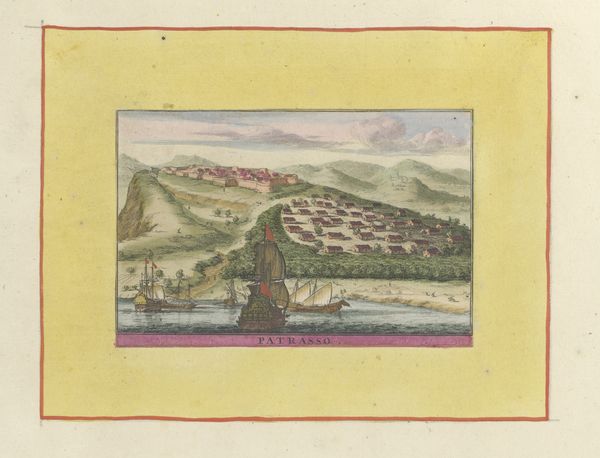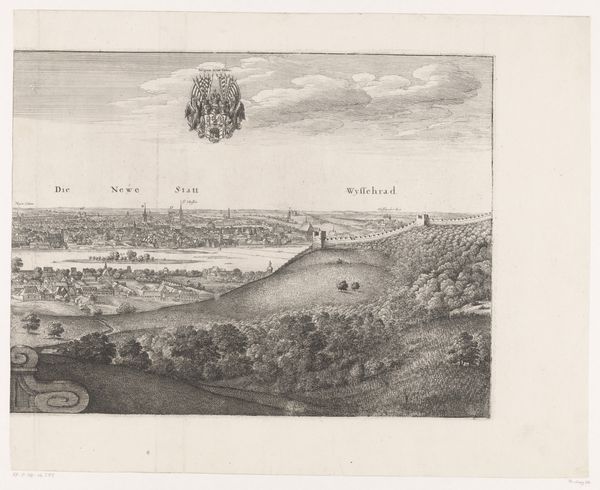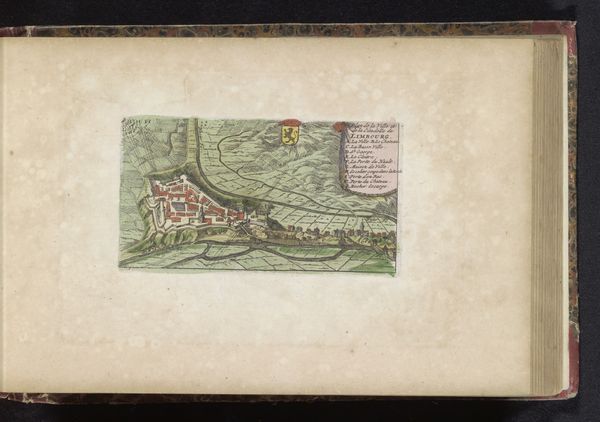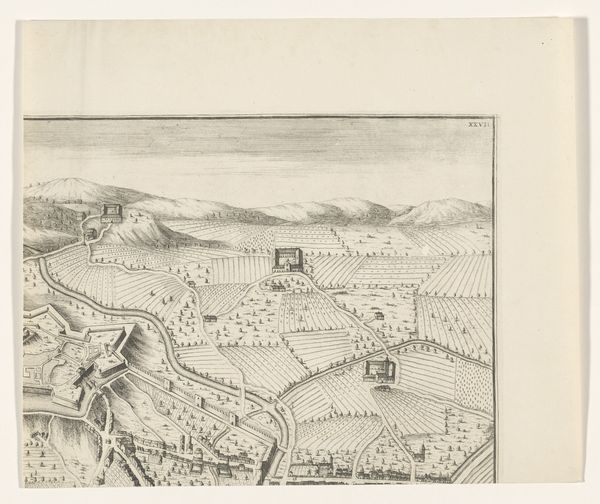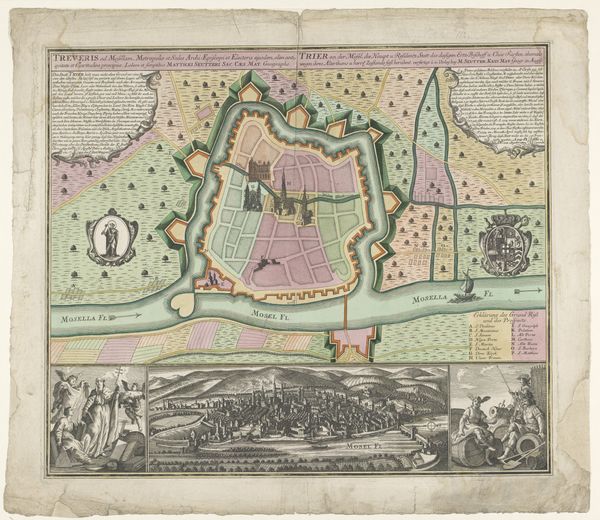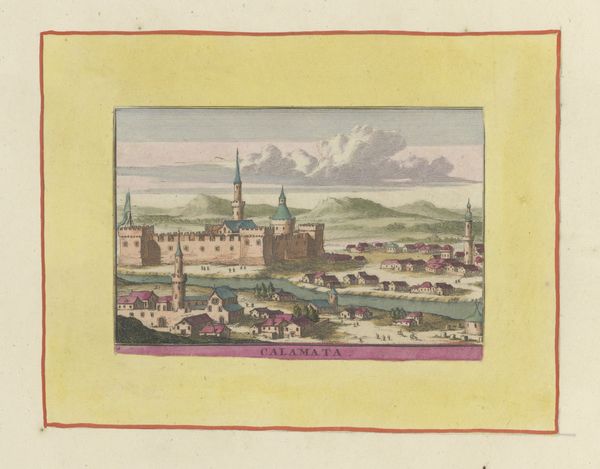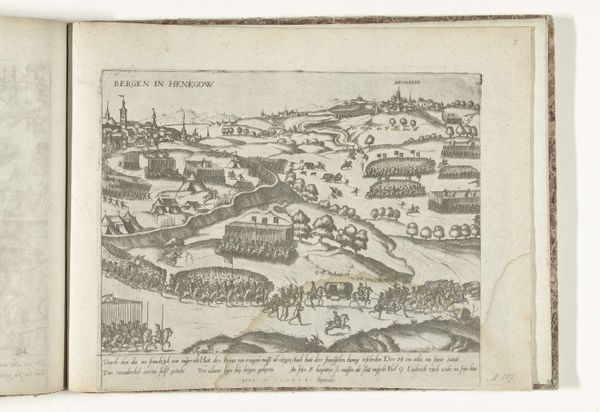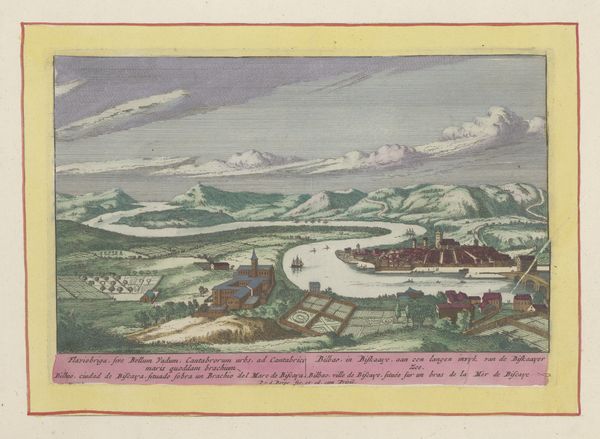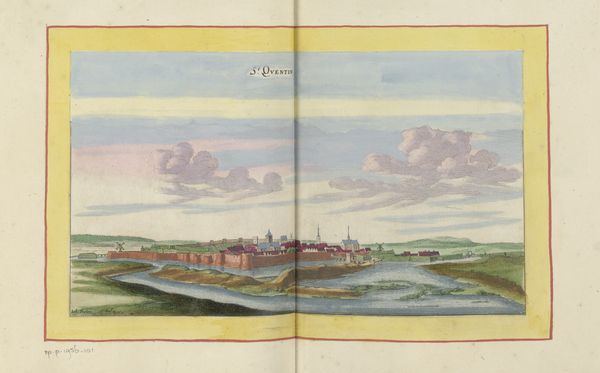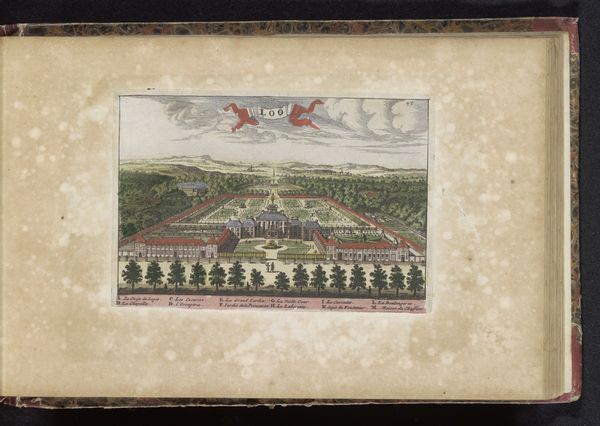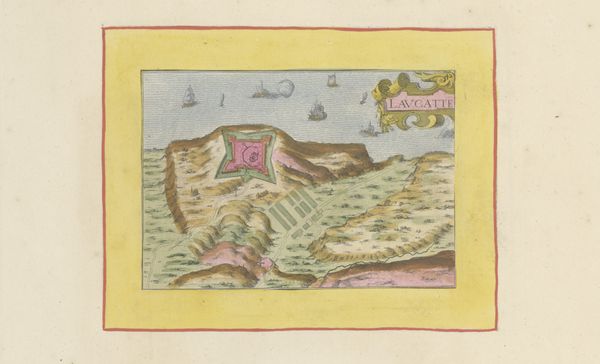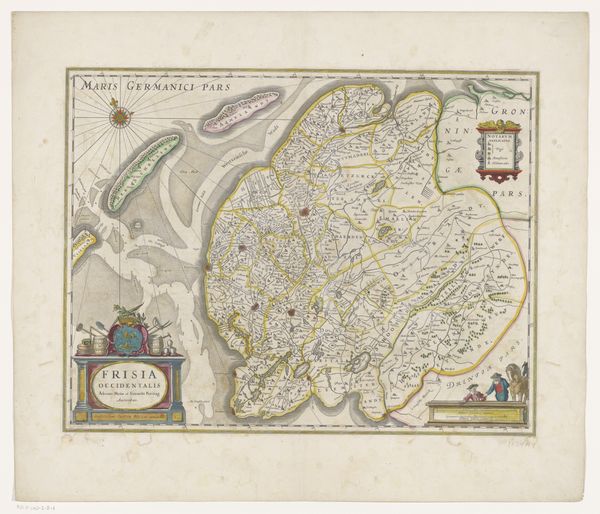
painting, watercolor
#
baroque
#
painting
#
landscape
#
watercolor
#
coloured pencil
#
cityscape
Dimensions: height 103 mm, width 151 mm, height 532 mm, width 320 mm
Copyright: Rijks Museum: Open Domain
Curator: We’re looking at "Gezicht op Montpellier," dating back to 1638. It appears to be rendered in watercolor and coloured pencil. Editor: The subdued palette creates such a tranquil mood. Despite being a cityscape, it possesses this almost dreamlike softness and clarity of lines, particularly when considering the rendering of space and depth. The light is interesting. Curator: Yes, the way the linear perspective dictates the composition is intriguing. The artist orchestrates your focus toward the horizon, a classical technique of spatial organization. The vantage point offers us an idealized panorama where urban space meets landscape. Semiotically, it speaks of a carefully ordered world. Editor: Agreed. Yet, look at the materiality. The tangible quality of paper, the visible layering of watercolor washes; this challenges the ‘idealized’ read. How much of this image-making was determined by material access at the time, not just classical perspective? Curator: The interplay between materials and technique definitely informs our understanding. Consider the texture, how it subtly influences light interaction—elements are integral to the picture plane. I would go further. The frame that contains this piece acts as a structural device that contributes significantly to our perception. Editor: The frame also reminds us of the artistic labor, that it is deliberately bound. Consider also that the pigments themselves, their sources and cost, reflect larger social and trade networks of the period. What about that pink river—surely that hue wasn’t naturally occurring. Was it manipulated? And why? Curator: A symbolic flourish perhaps, intended to elevate the cityscape above mundane reality. In a broader theoretical sense, it reveals the layers of signs present. However, to address the materiality directly shifts the emphasis onto production conditions of the work. Editor: Precisely! It urges a dialogue about artistic methods and who has access to which mediums, techniques, and what that access conveys. Curator: This artwork provides rich avenues of inquiry for scholars of early urban landscapes and their social contexts. It’s also a beautiful illustration of how art constructs reality via visual design. Editor: A delicate dance of materiality, methods, and perception… it encourages us to read artworks not as representations of pure vision, but products deeply rooted in tangible material processes and specific historical moments.
Comments
No comments
Be the first to comment and join the conversation on the ultimate creative platform.

